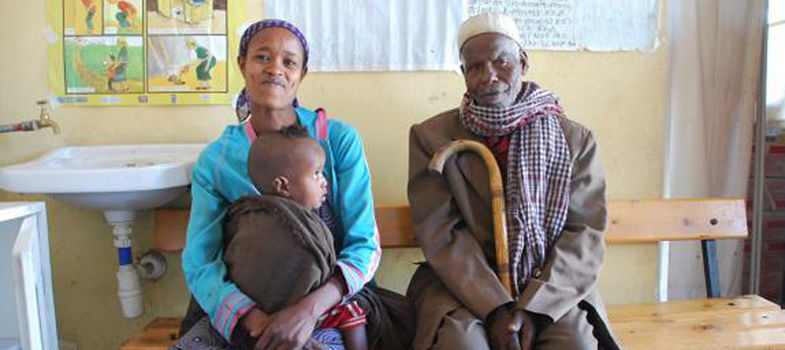Self-Assessment Questions (SAQs) for Study Session 14
Now that you have completed this study session, you can assess how well you have achieved its Learning Outcomes by answering the following questions. Write your answers in your Study Diary and discuss them with your Tutor at the next Study Support Meeting. You can check your answers with the Notes on the Self-Assessment Questions at the end of this Module.
SAQ 14.1 (tests Learning Outcomes 14.2)
Suggest some ways to help women who cannot afford to buy a lot of different foods how they can get enough calories and a variety of foods.
Answer
Beans, peas and lentils are cheap and nourishing and quite easy to grow. Organ meats like liver, heart and kidney have a lot of iron and may cost less than other meats. Brown bread or brown rice and dark teff are more nutritious than the light-coloured grains and are usually cheaper to buy if she cannot grow her own.
SAQ 14.2 (tests Learning Outcomes 14.1 and 14.2)
Complete Table 14.1. Some of the categories have been left blank for you to write your answers.
| Food group | Contains | Three examples |
|---|---|---|
| Main foods | Carbohydrates |
|
| Proteins |
|
| Go foods |
|
|
| Vitamins and minerals |
|
Answer
The table below is the completed version of Table 14.1. We do not know exactly which three examples you chose for each food group, so you may have mentioned other good examples.
| Food group | Contains | Three examples |
|---|---|---|
| Main foods | Carbohydrates | Injera, rice, maize, etc. |
| Grow foods | Proteins | Beans, eggs, meat, etc. |
| Go foods | Sugars and fats | Fruits, honey, nuts, etc. |
| Glow foods | Vitamins and minerals | Fish, dark green leafy vegetables, meat, etc. |
SAQ 14.3 (tests Learning Outcomes 14.3, 14.4 and 14.5)
What advice should you give a pregnant woman on how to avoid infection in herself or her newborn baby? Think of at least three different actions she can take.
Answer
Some actions that you can advise a pregnant woman to take to avoid infection in herself and her newborn baby:
- Washing her hands with soap, particularly before preparing food and after using the toilet.
- Washing her body every day with clean water, especially her genital area.
- Cleaning her teeth every day with a dental stick or toothbrush.
- Getting an immunization with tetanus toxoid.
- Keeping the stump of the newborn baby’s umbilical cord clean and dry until it falls off.
SAQ 14.4 (tests Learning Outcomes 14.1, 14.5 and 14.6)
Which of the following statements is false? In each case, explain what is incorrect.
A Breastfeeding is 100% effective at preventing a further pregnancy.
B Colostrum should be fed to the newborn baby, not thrown away.
C Early and exclusive breastfeeding means feeding only breastmilk from the first hour of the baby’s life until at least 6 months of age.
D Even if menstrual periods return during exclusive breastfeeding, a woman does not need to begin another form of contraception.
E The benefits of birth spacing of at least 2 years include reduced risk of maternal and fetal death.
Answer
A is false. Breastfeeding is not 100% effective at preventing a further pregnancy; full and exclusive breastfeeding gives good protection from pregnancy but cannot be relied on as 100% effective —especially not after 6 months from the birth or if menstrual periods return.
B is true. Colostrum should always be fed to the baby because it is very nutritious and gives protection against infection.
C is true. Early and exclusive breastfeeding means feeding only breast milk from the first hour of the baby’s life until at least 6 months of age.
D is false. A woman who is breastfeeding exclusively does need to begin another form of contraception if her menstrual period returns.
E is true. Birth spacing of at least 2 years reduces the risk of maternal and fetal death.
Summary of Study Session 14
